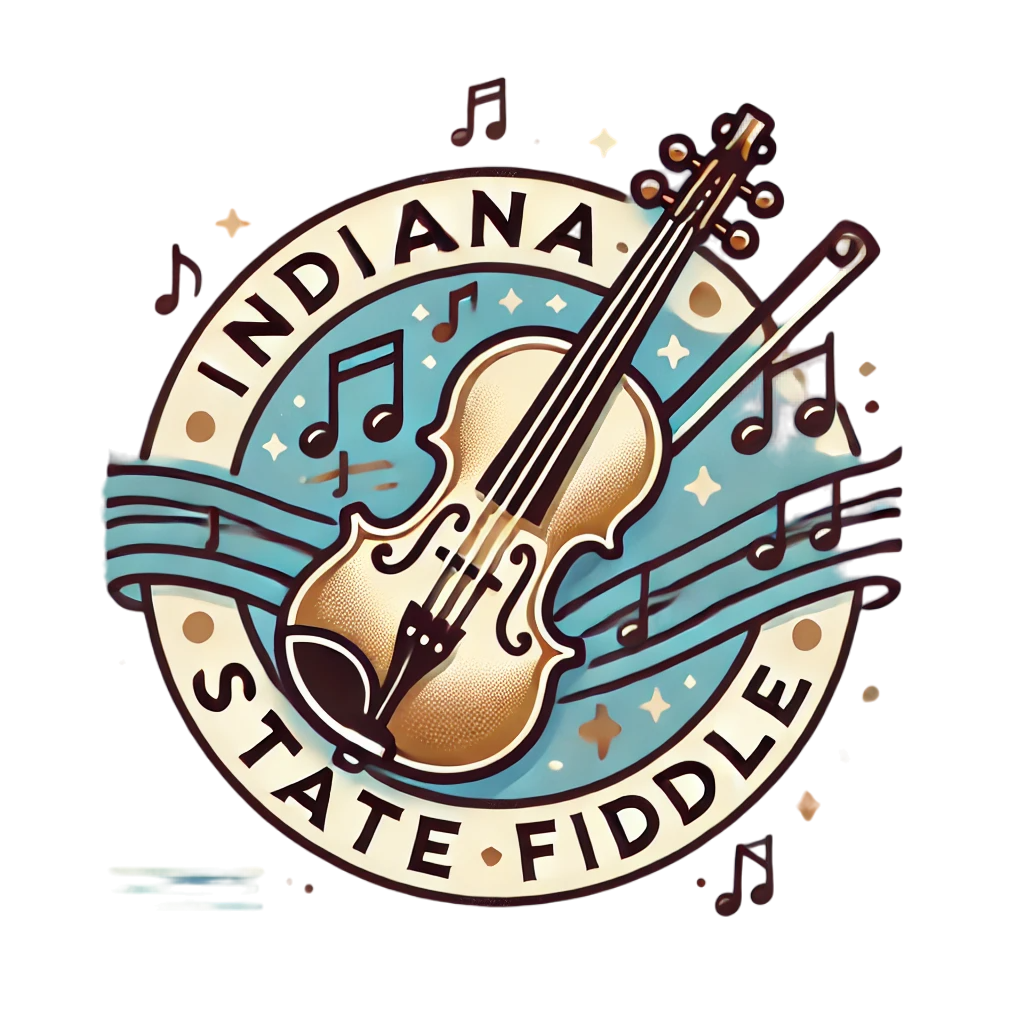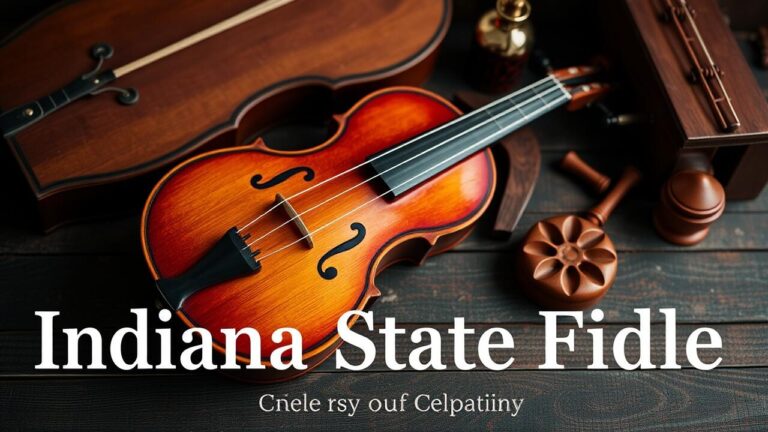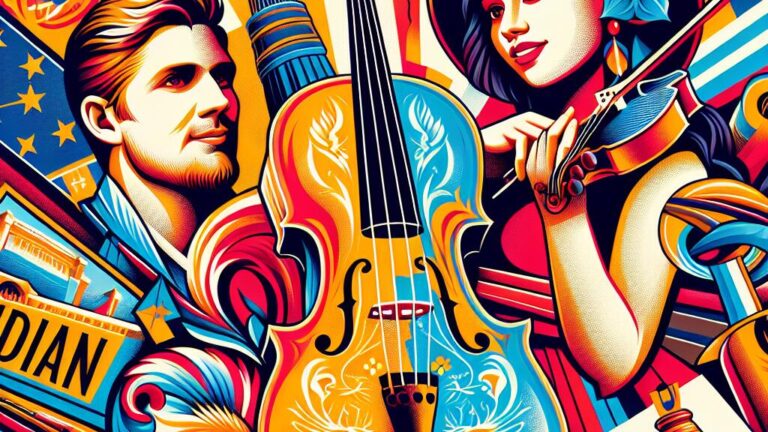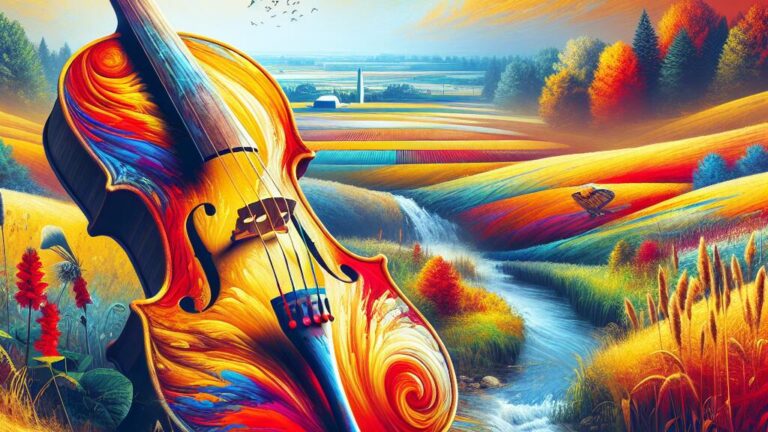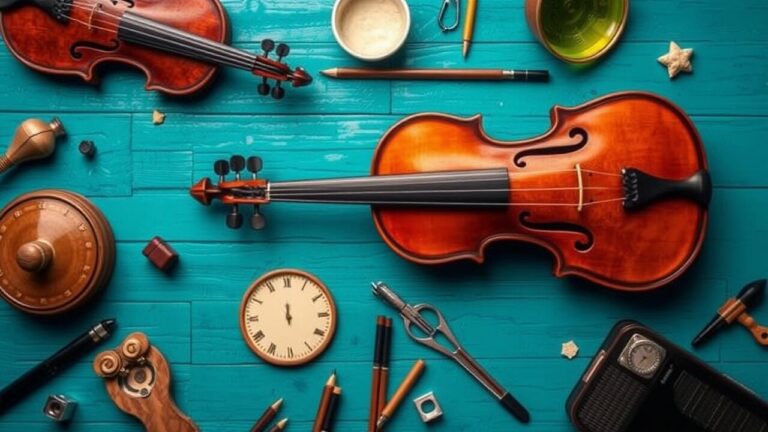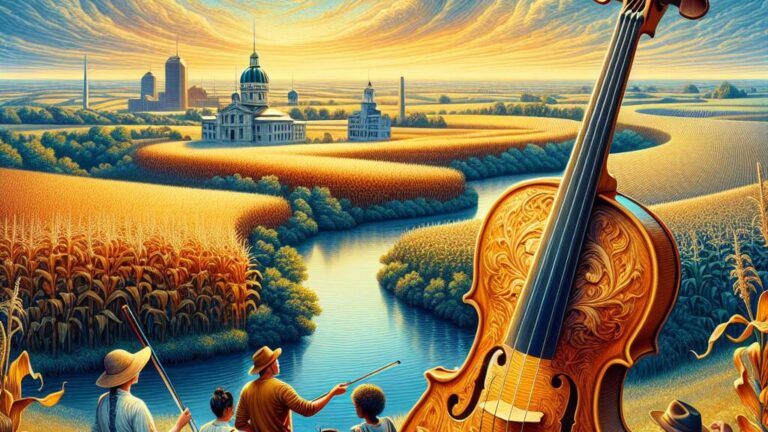Why the Indiana State Fiddle is an important part of Hoosier culture
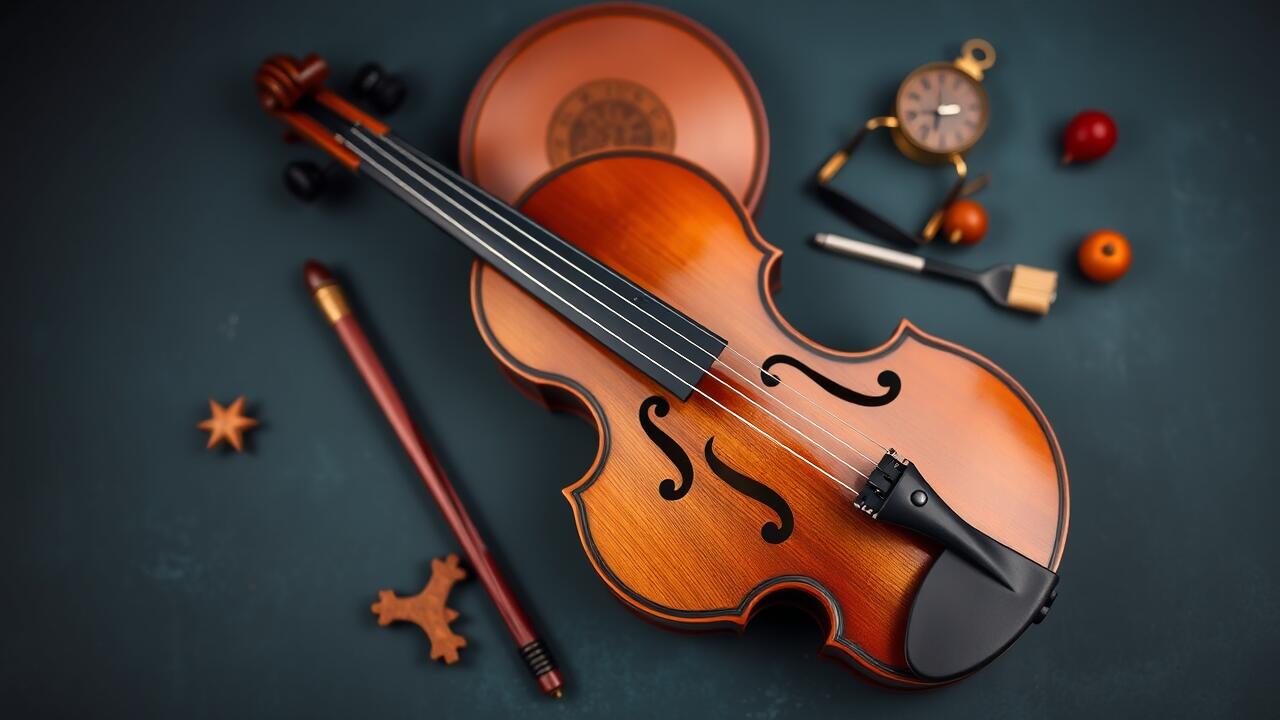
Table Of Contents
Why The Indiana State Fiddle Is An Important Part Of Hoosier Culture | Discover Why the Indiana State Fiddle Is an Essential Element of Hoosier Culture
Why The Indiana State Fiddle Is An Important Part Of Hoosier Culture | Historical Significance of the Indiana State Fiddle
The Indiana State Fiddle embodies a rich tapestry of cultural significance that resonates deeply within Hoosier identity. Why the Indiana State Fiddle is an important part of Hoosier culture is rooted in its historical background, tracing back to the diverse influences from the southern and northern regions of Indiana. Traditional fiddling has been a vital expression of community life in small towns and larger cities alike, highlighting the state of Indiana’s agricultural heritage and social gatherings. Institutions such as Indiana University and the Indiana Historical Bureau have played crucial roles in preserving this art form. Through festivals and informal gatherings, Hoosiers celebrate their musical heritage, ensuring that the sound of the fiddle remains a staple in the cultural landscape of Indiana.
Why the Indiana State Fiddle is an important part of Hoosier culture | Origins of Traditional Fiddling in Indiana
The Indiana State Fiddle has deep-rooted origins that reflect the diverse cultural influences present in Indiana. Fiddle players from various backgrounds, including those inspired by Native American culture, contributed to a vibrant musical landscape. In communities like South Bend and Northwestern Indiana, fiddling became a popular pastime, connecting residents through shared melodies and rhythms. The Indiana State Museum highlights these historical connections, showcasing how traditional fiddling evolved alongside other cultural expressions in the state.
Indiana University Bloomington plays a crucial role in preserving the state’s fiddling traditions. Students and local fiddlers engage with the heritage of the Indiana State Fiddle, exploring its significance through workshops and performances. This collaborative spirit not only enriches the educational experience but also strengthens the understanding of why the Indiana State Fiddle is an important part of Hoosier culture. By celebrating both the historical and contemporary aspects of fiddling, Indiana continues to honor its unique musical legacy.
Evolution of the Indiana State Fiddle
The evolution of the Indiana State Fiddle is deeply intertwined with the diverse influences of its early settlers. Midwesterners and Pennsylvanians brought their own fiddling traditions to Indiana, shaping a unique style that reflects the state’s rich cultural tapestry. As these fiddlers embraced local tunes, they helped to define why the Indiana State Fiddle is an important part of Hoosier culture. Events like the Indiana State Fair and gatherings in areas such as Battle Ground showcased these evolving musical expressions, highlighting the fiddle’s role in community cohesion and celebration.
Over the years, the Indiana State Fiddle has adapted to changing musical landscapes while maintaining its traditional roots. As influences from surrounding regions, including Kansas and Pennsylvania, seeped into Indiana’s musical identity, local fiddlers began to experiment with different techniques and styles. This interplay of tradition and innovation has reinforced why the Indiana State Fiddle is an important part of Hoosier culture. The fiddle’s presence at local festivals and community events continues to revitalize interest among new generations of musicians eager to carry on this beloved Indiana legacy.
Cultural Impact on Hoosier Identity
The Indiana State Fiddle serves as a vibrant thread in the tapestry of Hoosier culture, connecting diverse influences from Missouri fiddling to the traditions of Native Americans. Its roots can be traced through the Midwestern musical landscape, where Norwegian-American settlers contributed their unique styles. Communities in Chillicothe, Ohio, and across neighboring states like Nebraska have also embraced fiddling as a means of storytelling and cultural expression. This instrument not only reflects the history and heritage of native people but also unites various cultures within Indiana, illustrating Why the Indiana State Fiddle is an important part of Hoosier culture. Through its resonant strings, the fiddle fosters a shared identity among individuals and communities, celebrating their collective past while shaping the future.
The Role of Fiddling in Indiana’s Communities
Fiddling serves as a vital thread woven into the fabric of Indiana’s communities, echoing the influence of settlers who brought their diverse fiddle styles from various regions, including Ohio and Wisconsin. The instrument has become an integral part of gatherings, celebrations, and social events, fostering a sense of belonging and cultural pride among residents. This connection showcases why the Indiana State Fiddle is an important part of Hoosier culture, reflecting the shared heritage that binds generations through music.
The presence of the Indiana State Fiddle can be felt in local festivals, dance halls, and family gatherings, where it transcends generations and invites participation from young and old alike. As a musical instrument rich with history and significance, it plays a pivotal role in preserving the essence of Indiana’s diverse cultural landscape, which has roots in the Mississippian culture and beyond. Celebrations in cities like Indianapolis highlight this rich tradition, reinforcing why the Indiana State Fiddle is an important part of Hoosier culture.
- Fiddling promotes community engagement and social interaction at local events and festivals.
- It facilitates the sharing of stories and traditions between generations, enhancing communal bonds.
- Fiddling often serves as a way to celebrate Indiana’s agricultural heritage and seasonal festivities.
- Local fiddle clubs and organizations provide opportunities for education and collaboration among musicians.
- The fiddle’s presence in schools and community programs helps nurture future generations of musicians.
- Fiddling encourages creativity and self-expression in individuals and communities.
- It fosters a sense of identity and pride among residents, showcasing Indiana’s unique cultural contributions.
Fiddling Festivals and Events in Indiana
Fiddling festivals in Indiana serve as vibrant gatherings that celebrate the rich heritage of the Indiana State Fiddle. These events draw not only local musicians but also artists from surrounding states like Illinois and Minnesota. Traditional genres such as bluegrass and folk intertwine with influences from German, Irish, and Norwegian cultures, showcasing the diverse musical tapestry that defines Hoosier culture. Through these festivals, communities come together, creating a strong sense of identity and pride in their musical roots.
At these festivals, attendees experience not only dynamic performances but also hands-on workshops that highlight why the Indiana State Fiddle is an important part of Hoosier culture. Musicians of all skill levels participate, learning techniques from seasoned players while fostering a love for bluegrass music. The blend of storytelling and music transcends generational gaps, making these events a crucial part of preserving local traditions and encouraging the next generation to embrace Indiana’s vibrant fiddling legacy.
Connection to Folklore and Heritage
The Indiana State Fiddle serves as a living link to the rich folklore and heritage of the region, which is why the Indiana State Fiddle is an important part of Hoosier culture. Indiana fiddlers, both native and adopted Hoosiers, skillfully weave stories through their music, capturing the essence of Indiana communities and preserving local legends. Good Midwestern fiddlers contribute to this tradition by blending narratives into their performances, creating a vibrant tapestry of Indiana music that resonates with audiences. For Midwestern fiddlers, the act of playing is not just about the melody; it embodies the spirit of the Hoosier identity, fostering a connection to the past while enriching the cultural landscape of the present.
- The Indiana State Fiddle promotes cultural preservation through music.
- Local legends and stories are kept alive through fiddling traditions.
- Fiddlers often perform at community events, strengthening local ties.
- The art of fiddling is passed down through generations, ensuring continuity.
- Indiana fiddlers play a significant role in regional festivals and gatherings.
- Collaboration among musicians enhances the richness of the fiddle community.
- The music reflects the diverse backgrounds and experiences of Hoosiers.
Storytelling Through Fiddle Music
Fiddle music is a powerful medium for storytelling, capturing the essence of Hoosier culture through its melodies and rhythms. The rich tapestry of Indiana’s fiddle traditions includes influences from southern-born fiddlers and Norwegian-American fiddlers, showcasing the diverse backgrounds that shape this art form. From vibrant performances in Indiana cities to the collaborative efforts of a midwest_fiddler and midwestern style fiddler, each tune serves as a narrative thread linking generations. This combination of cultures and styles is essential to understanding why the Indiana State Fiddle is an important part of Hoosier culture, as it reflects the joys, struggles, and experiences of the community.
Local storytelling often comes alive during community gatherings and events, where traditional arts Indiana take center stage. Fiddle players weave tales through their music, inviting listeners to connect with the history and heritage of central Indiana. Educational programs at institutions like Indiana University, including the M.A. in traditional music, emphasize the significance of this storytelling aspect. By engaging with the fiddle, participants become part of a legacy that not only preserves but also celebrates the unique narratives that define Hoosier identity.
Preservation of Local Legends and Folklore
Fiddle music serves as a vessel for the rich tapestry of stories that define Hoosier culture. Immigrant fiddlers brought their musical traditions to Indiana, helping to weave a diverse narrative that honors local legends. This storytelling through music is part of what makes the Indiana State Fiddle an important part of Hoosier culture. Resources like indiana memory and hoosierhistorylive.org celebrate these stories and the contributions of influential Indiana artists, creating a vibrant archive for future generations. Favorite fiddlers, including the renowned Wisconsin fiddler Leonard, illustrate this cultural connection by bridging experiences and traditions.
The Indiana Field Collection captures the essence of fiddling in preserving local folklore. Each note played by died-in-the-wool Hoosiers echoes the legacy of their ancestors, ensuring that tales of resilience and joy remain alive. The Indiana State Fiddle symbolizes the collective experience of generations, fostering a sense of belonging and identity. Platforms such as indianafiddlersgathering.com provide opportunities for community engagement, celebrating the art of fiddling while promoting the preservation of these cherished legends.
Influence on Music Genres
The Indiana State Fiddle plays a crucial role in shaping various music genres, particularly by weaving together Appalachian fiddle styles with the rich traditions of Midwestern fiddling. It reflects the diverse influences that have shaped Hoosier culture, including contributions from immigrant musicians who brought unique techniques and melodies. Events like the Hoosier Hop Show showcase this vibrant heritage, while landmarks such as Indiana state parks often host gatherings where fiddlers share their craft. The Indiana University archives serve as a repository for these musical legacies, documenting the contributions of both non-native influences and local artists, including Amish toymakers, who have enriched the fiddle’s narrative. Understanding why the Indiana State Fiddle is an important part of Hoosier culture reveals its significance in both preserving and evolving musical expression across genres.
The Indiana State Fiddle in Bluegrass and Country
The influence of the Indiana State Fiddle in bluegrass and country music showcases its essential role within Hoosier culture. From early woodland Indiana communities to modern musical instrument businesses, this fiddle has served as a bridge between various musical traditions. Notably, the sounds of Appalachian fiddling resonate through the strings, reminding listeners of the rich history of native cultures. Fine fiddlers, such as Metis fiddler John, have contributed to this legacy, solidifying the state fiddle’s place in the hearts of musicians and enthusiasts alike.
As a staple in Indiana’s musical landscape, the fiddle often takes the lead, playing first fiddle in many regional bands. Its versatility allows it to complement other instruments, effectively playing second fiddle when needed. The Indiana broadcast collections highlight performances that feature this beloved instrument, capturing the essence of bluegrass and country. Recognizing why the Indiana State Fiddle is an important part of Hoosier culture enhances appreciation for its ongoing impact on contemporary music genres.
Cross-Genre Collaborations Featuring the Fiddle
The Indiana State Fiddle serves as a bridge between various musical genres, highlighting why the Indiana State Fiddle is an important part of Hoosier culture. Fiddlers across the midwestern portion of the United States bring together different fiddle dialects, showcasing the diverse influences that shape their music. From the rhythmic cadences of old-time fiddlers to the intricate melodies introduced by Irish musicians, these collaborations create a rich tapestry of fiddle music that resonates with audiences everywhere. Notable fiddlers like Melvin Wine have contributed to this cultural exchange, making a lasting impact on the scene.
The blending of styles isn’t limited to Indiana alone. Southern Wisconsin and other neighboring regions also embrace these cross-genre collaborations, enriching the vibrancy of fiddle traditions. Collaborations often take place in local settings, such as the Indianapolis factory, where musicians gather to share their techniques and innovations. This dynamic interaction not only preserves traditional sounds but also fosters a renewed appreciation for fiddle music as it evolves through various influences, reinforcing why the Indiana State Fiddle is an important part of Hoosier culture.
Educational Aspects of Fiddling
The Indiana State Fiddle serves as a vital instrument in bridging generations and fostering community learning among musicians across the state. Emphasizing the role of fiddling in Hoosier culture, this instrument has roots tracing back to the traditions of slave musicians and influences from Carolina. Engaging in fiddle instruction not only nurtures skills in bluegrass but also complements other instruments like the banjo, enriching the overall musical experience. Festivals and gatherings celebrate this rich heritage, allowing individuals to connect through music while understanding why the Indiana State Fiddle is an important part of Hoosier culture. As aspiring musicians learn and share their craft, they contribute to the preservation and evolution of these treasured traditions.
| Program/Organization | Location | Focus Area | Impact |
|---|---|---|---|
| Indiana Fiddlers’ Gathering | Winamac, IN | Fiddle Workshops | Supports local fiddlers and promotes cultural heritage |
| Hoosier Hills Fiddle Camp | Middlebury, IN | Bluegrass Instruction | Encourages skill development and community building |
| National Oldtime Fiddlers’ Contest | Weiser, ID | Fiddling Competitions | Highlights young talent and fosters national interest in fiddling |
| Local Community Centers | Various Cities | Music Education | Provides accessible access to fiddle lessons for all ages |
Fiddle Instruction and Community Learning
Fiddle instruction serves as a vital avenue for engaging with the Indiana State Fiddle, illustrating why the Indiana State Fiddle is an important part of Hoosier culture. Local music schools and community centers offer programs where students can learn to play this iconic instrument, alongside other band instruments. These educational initiatives often focus on traditional music, allowing participants to build a repertoire that connects them with the rich cultural heritage of the state. Such learning experiences foster a sense of community and belonging, enriching Indiana’s diverse cultural landscape.
Community learning also promotes the appreciation of traditional fiddling styles, which are essential to Hoosier identity. Through workshops and jam sessions, musicians of all ages come together to explore the intricacies of this unique art form. Participants often describe their experiences as otjunky, emphasizing the joy of sharing knowledge and skills. By nurturing interest in the Indiana State Fiddle, these educational programs ensure that its historical significance endures, reflecting why the Indiana State Fiddle is an important part of Hoosier culture.
Conclusion
The Indiana State Fiddle holds a prominent place in Hoosier culture, symbolizing a rich tapestry of community, tradition, and artistry. Understanding why the Indiana State Fiddle is an important part of Hoosier culture reveals its roots in the historical practices of fiddling that have shaped local identities. Over time, this musical tradition has evolved, influencing various genres and fostering a sense of belonging among its practitioners. As this cherished instrument continues to resonate through festivals and gatherings, the role it plays in storytelling and preserving folklore further solidifies its significance. The Indiana State Fiddle is not merely a musical instrument; it is a vital part of Indiana’s cultural heritage that connects generations and celebrates the spirit of the community.
FAQS
How does the Indiana State Fiddle reflect the cultural diversity of the Hoosier State, particularly in regions like Southern Indiana and Northern Indiana?
The Indiana State Fiddle serves as a cultural emblem that embodies the rich traditions and musical heritage of the Hoosier State. In Southern Indiana, you can hear Appalachian fiddling sounds that reflect the area’s historical influences, while Northern Indiana, including places like South Bend, showcases a blend of styles that contribute to the broader Indiana memory of music. This diversity is celebrated through events where old-time fiddlers and banjo playing create a vibrant atmosphere, uniting communities from all parts of Indiana, including the Indiana State Capitol and Battle Ground. Indiana University M.A. programs often explore these musical traditions, highlighting how unique fiddling styles contribute to the harmony of Hoosier culture. As we Hoosiers embrace our heritage through the Mid-West Fiddlers’ performances, we honor the past and keep our cultural narrative alive.
How do various towns in Indiana, such as South Bend and Battle Ground, contribute to the legacy of the Indiana State Fiddle and the community of old-time fiddlers?
Towns like South Bend and Battle Ground, Indiana, play a significant role in the legacy of the Indiana State Fiddle by fostering communities where old-time fiddlers, such as Melvin Wine, create a sense of Hoosier harmony. These cities reflect Indiana’s rich musical heritage, which is captured in shared memories and traditions among its residents. Through events and gatherings, the Indiana memory of fiddlers keeps the spirit of the Indiana State Fiddle alive, promoting the identity of we Hoosiers.
What role does the Indiana State Fiddle play in preserving Indiana’s musical heritage for communities like South Bend and particularly for old-time fiddlers such as Melvin Wine and Hoagy?
The Indiana State Fiddle significantly contributes to preserving Indiana’s musical heritage by connecting communities throughout indiana, including South Bend, with the rich traditions of old-time fiddlers. This preserves the memory of legendary fiddlers like Melvin Wine and Hoagy, ensuring that the heritage of music in Indiana lives on through performances and community gatherings.
How do the old-time fiddlers in South Bend, Indiana contribute to the memory of the Indiana State Fiddle as a key part of Hoosier culture?
The old-time fiddlers in South Bend, Indiana, play a significant role in keeping the Indiana memory alive through their performances and community gatherings. Fiddlers, including notable figures like Melvin Wine, draw from a rich tradition that showcases the importance of the Indiana State Fiddle in the cultural landscape of the state. These fiddlers not only celebrate their craft but also connect the local community to the larger narrative of Hoosier heritage, ensuring that the legacy of the Indiana State Fiddle continues to thrive in Indiana cities and beyond.
What significance does the Indiana State Fiddle have in shaping the collective memory of Hoosiers in different Indiana cities?
The Indiana State Fiddle is a pivotal element in understanding the shared Indiana memory among Hoosiers, as it connects various Indiana cities through the artistry of old-time fiddlers. Icons like Melvin Wine exemplify the rich tradition of fiddlers, preserving the legacy of this music genre that resonates deeply within the communities and the broader narrative of Indiana’s cultural history.
How do Old Time Fiddlers in Indiana, like Melvin Wine, keep the memory of the Indiana State Fiddle alive in different Indiana cities?
Old time fiddlers, such as Melvin Wine, play a crucial role in maintaining the Indiana memory of the Indiana State Fiddle. Through community gatherings and performances across various Indiana cities, they help connect Hoosiers with their musical heritage. These fiddlers not only celebrate the art of traditional fiddling but also foster a sense of pride in Indiana culture and history, ensuring that the legacy of the Indiana State Fiddle continues to thrive.
How do fiddlers in Indiana, including Melvin Wine, help to create a lasting memory of the Indiana State Fiddle within various Indiana cities?
Fiddlers in Indiana, like Melvin Wine, play a vital role in preserving the rich cultural legacy of the Indiana State Fiddle. They contribute to the indiana memory by performing at local events and gatherings in indiana city, showcasing the traditions that are important to hoosiers. Through their performances and storytelling, these fiddlers ensure that the way fiddlers pass down the music and history of the Indiana State Fiddle remains alive for future generations.
How do Indiana fiddlers, including Melvin Wine, influence how Hoosiers remember the cultural significance of the Indiana State Fiddle?
Indiana fiddlers, like Melvin Wine, play a crucial role in shaping the Indiana memory by performing traditional tunes and sharing stories that highlight the importance of the Indiana State Fiddle. This connection to the past helps Hoosiers appreciate their rich cultural heritage and fosters a sense of community around old-time fiddling.
How do Indiana fiddlers contribute to the cultural identity of Hoosiers while shaping the Indiana memory through their performances?
Indiana fiddlers, including notable figures like Melvin Wine, play a crucial role in expressing the identity of Hoosiers. Through their performances, these fiddlers preserve and enrich the Indiana memory, showcasing the state’s musical heritage and connecting communities with their cultural roots.
In what ways do Indiana fiddlers, particularly those like Melvin Wine, enhance the understanding of Hoosiers and their collective memory surrounding traditional music?
Indiana fiddlers, including renowned musicians like Melvin Wine, play a crucial role in enriching the cultural landscape of Hoosiers by performing traditional music that resonates with the Indiana memory. Their contributions help to commemorate the fiddle’s importance in the state’s heritage, ensuring that the songs and stories of the past are passed down through generations, cementing the legacy of fiddlers like Melvin Wine in the hearts of Hoosiers.
